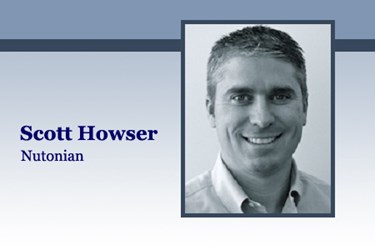Data Science Is Becoming Increasingly Automated — And That's Good News For Healthcare

By Scott Howser, SVP Products, Nutonian
Big Data is playing an increasing role in healthcare, promising lower costs, enhanced diagnoses, and improved doctor-patient matches. To get to the next level, two sea changes — access to medical information and intelligent data solutions — need to accelerate.
Traditionally, the engine for understanding data has been a cobbling-together of infrastructure, visualization tools, statistics packages, and smart, expensive business and technical specialists. While some problems can be solved this way, the finite amount of technical expertise and slow time-to-answer cycles will make this melting pot obsolete.
As analytics solutions become smarter and more user-friendly, hospitals and healthcare providers can take action on their data without overtaxing their data science teams. With growing access to valuable patient data sets via EMRs and solutions like machine intelligence to automate the creation of algorithms from the data, researchers and physicians can now develop improved methods for diagnosis.
Take CT scans as an example. CT scans are the gold standard for accurately diagnosing acute appendicitis, but recent studies show that exposure to radiation leads to an increased risk of cancer, especially in children. As a result, researchers at Jacobi Medical Center in New York sought a faster, less harmful way to diagnose acute appendicitis in pediatric patients.
Incorporating machine intelligence into its analytics stack, the Jacobi Medical Center conducted a retrospective study of 161 consecutively registered children from two medical centers — 94 boys and 67 girls, ranging in age from 1–20 years — to determine whether perforated and non-perforated appendices in children can be differentiated with an ultrasound rather than a CT scan. Treatment for acute appendicitis depends entirely on whether or not the appendix has already burst, so fast and accurate diagnosis is critical in determining the care protocol.
The American Journal of Roentgenology details how a machine intelligence application helped clinicians discover an analytical model from ultrasound data that was both more predictive than CT scans and less dangerous for children. In patients younger than eight, loss of the ecogenic submucosal layer was often associated with perforation, an indicator that was previously unknown.
The final result of the study was a simple rule for the interpretation of ultrasound findings, a rule researchers said they couldn’t have discovered without machine intelligence: If the ultrasound shows an abscess, or if the patient is younger than eight and the ultrasound shows either loss of the submucosal layer or an appendicolith, there’s a remarkably high likelihood of a perforated appendix.
Since implementing this new protocol, clinicians are diagnosing perforation in children early, preventing additional complications. However, to establish a higher level of accuracy, researchers plan to use the machine intelligence application to determine a formula that combines ultrasound results and clinical findings. Diving deeper into data sheds light on how unrestricted access to patient information and intelligent data applications can lead to transformational changes in healthcare, including:
- Insurance companies could identify the true variables that determine health risks. This would create health plans customized to each patient and priced to individual needs, eliminating the current one size fits all approach that drives up costs.
- Characteristics of millions of patients could be analyzed instantly to uncover critical biological relationships that cause diseases. Identifying these markers will lead to the development of new and better drugs and treatments.
- The analysis of thousands of doctor/patient outcomes could be used to personalize the doctor selection process, matching the right patient to the right doctor at the right time.
Automated data science tools help remove the complexity and scalability bottlenecks from Big Data, allowing users to fully examine data to uncover valuable information. Saturating the market with these machine intelligence applications may not be a magic bullet that instantly solves the national healthcare problem. But they do deliver a self-driving vehicle for those who want to begin navigating a daunting road. Give them all your data and they will get you to your destination. You’ll notice the roads getting smoother along the way.
About The Author
Scott Howser serves as SVP of products at Nutonian with responsibilities for product management, marketing and business development. Prior to joining Nutonian, Scott served as vice president of products and marketing at Hadapt with responsibilities for product management and marketing. Prior to Hadapt, Scott was vice president of product marketing at Vertica, an HP Company, with responsibility for product messaging, corporate branding, and establishing best practices for deployment and solutions architectures. Scott earned an M.B.A. from the University of Notre Dame, an M.S.I.S.M from Loyola University Chicago, and a bachelor’s degree from Ohio Dominican University.
